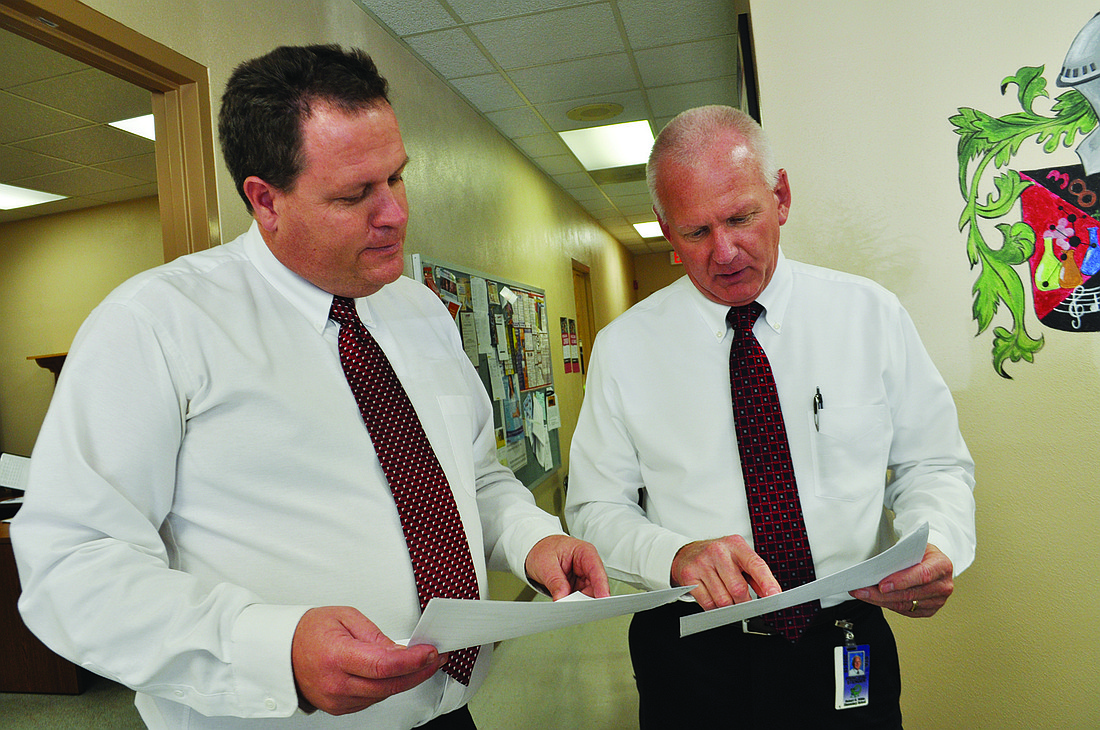- April 23, 2024
-
-
Loading

Loading

EAST COUNTY — As Tara Elementary School Principal Steve Royce stood in the front office, an unusual visitor borrowed the phone in a nearby office: Willis Elementary Principal Bill Stenger.
On Jan. 28, the two had their first official meeting through a program called “Cohorts.”
Their supervisor, Annette Codelia, one of two executive directors of elementary education for the Manatee County School District, started the new program last month. Principals typically hold a principal meeting once a month, with a district-wide session in the morning and another smaller group meeting in the afternoon. For the afternoon meeting, Codelia opted for her 17 principals to join each other at school sites.
“I think the best professional development for adult leaders is to spend time with each other and collaborate and see each other in action,” said Codelia, who completed an assignment similar to Cohorts while serving as principal of Bayshore Elementary approximately five years ago. “We do a lot of meetings where we sit and get information. You need the information, but you sit and you hear and you ask questions. But for the afternoon session, they already are spending the day outside their building, so why not join other principals in the district?”
Guided questions led the process as principals visited classrooms and completed other tasks.
Administrators will provide feedback to Codelia at their next meeting, later this month.
Royce and Stenger, for example, focused on conducting teacher evaluations during classroom observations. Principals observe more than 70 elements per teacher during the course of the year.
“(This) dictates pay,” Stenger said. “We want to be sure we are being as fair and consistent across the board as we can. It was an opportunity to validate what we see. Are we seeing the same thing? By talking about it, we realize we might have looked at (criteria) differently.”
Codelia said she paired low-income schools with higher-income schools to create a rich experience for principals, who were grouped into sets of four and five, and then paired off for the afternoon session. Although school demographics vary, many of the problems principals experience are the same.
Royce and Stenger said they enjoyed the experience.
“It’s a good opportunity to get together and find out all that’s happening at other schools,” said Stenger, who has been a principal since 1987. “It’s a good learning opportunity.”
Royce agreed.
“The opportunity to talk with other principals is a powerful conversation,” he said.
School Pairings reflect diversity
Annette Codelia oversees principals at 17 elementary schools. For the Cohorts program, she divided
principals into groups to ensure principals from schools of varying socio-economic levels would
have an opportunity to learn from one another.
Paired up
Below, we show the groups of principals and the percentage of their students on free or reduced-cost lunches. CEP, or community eligibility provision, indicates the school qualifies to provide meals to 100%
of its students, regardless of economic status.

Contact Pam Eubanks at [email protected].